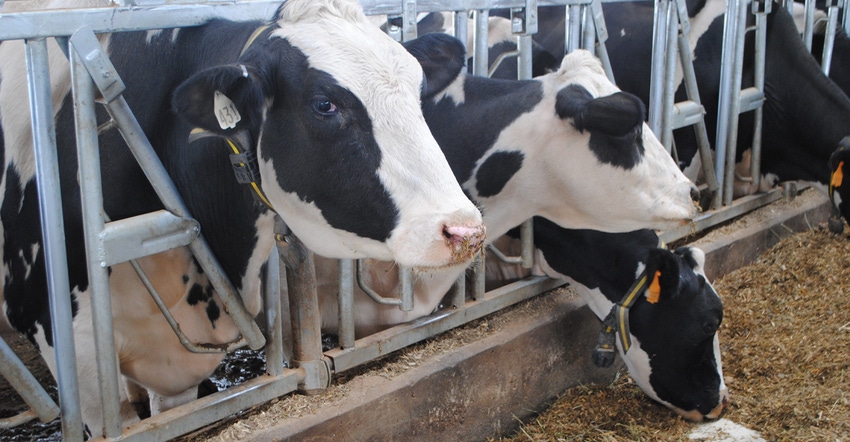September 23, 2019

By Amanda Young
Reproductive success in a dairy herd is a function of management policies and their implementation, combined with genetics and environment. Having a well-organized and effective reproduction program can be a major economic advantage to dairy herds.
First let’s discuss what success is related to dairy reproduction. In the overall picture, this is producing timely, successful pregnancies in your herd. However, the parameters that make up this objective will be farm-specific. This is where your operation can see real successes or struggles.
Setting goals will help your dairy herd experience reproductive success. Research by Dr. Gail Mathews shows that 76% of participants who wrote down their goals and actions and provided weekly progress to a friend successfully achieved their goals — 33% higher than participants with unwritten goals. This study shows the value of taking the time to write down your goals, create an action plan and develop a system of support to hold yourself accountable for achieving your goals.
Your farm can have the same success by setting SMART goals, which stands for specific, measurable, achievable, relevant and timely. Use benchmarks to set realistic and attainable goals. Use parameters that are measured by your record-keeping systems to keep your goals measurable. Create goals as target levels of performance toward which labors and managers are striving. Do not stop there. Plan the steps you need to take, and then put your plan into action. Three management practices where action can be taken include complete herd records, protocol compliance and proper artificial insemination techniques.
Complete herd records. The ability to use records effectively is a cornerstone of reproductive management. Accurate records are necessary to obtain the history of past performance and determine if changes or adjustments need to be made in current management policies. Many parameters can be used to monitor reproductive status and trends of the dairy herd, but every parameter monitored should be proactive and measurable, and result in profit to the dairy. Complete herd records should provide the necessary tools to define herd performance historically and currently.
Protocol compliance. What is compliance on the dairy? Here we will define it as the administration of treatments or actions according to a prescribed protocol. The more complicated a protocol, the greater the chances for procedural failure. There are two types of monitoring points for compliance: the execution of the event itself and the resulting outcome from that action that is related to the process.
Execution is critical, as the timing and hormones used are selected to cause a specific reproductive response in each animal, based on where she is currently in her cycle. In a PreSynch-OvSynch protocol that required three PGF injections and two GnRH injections, following the protocol 95% of the time means 77% of the animals will be ready for breeding, while following the protocol only 90% of the time decreases the animals ready for breeding to 59%.
Outcomes seen by using reproductive monitoring systems can provide performance results indicated by the day in milk at first service, serum progesterone levels at time of injection or insemination, and pregnancy rates in the subsequent 21-day cycles.
Proper AI practices. Additionally, pay close attention to your semen handling and inseminator techniques. Follow recommended semen thawing techniques; and deposit the semen in the uterine body as efficiently as possible upon thawing.
Your farm can achieve reproductive success by creating and writing down its goals and action plans. Create goals that fit the needs of your farm and your program. If you are struggling with where to start, look at the “low-hanging fruit” you can affect through your management skills and work ethic. Pay attention to details, comply with your protocols, and reward yourself and your team for the successes you achieve.
Young is the Extension dairy and livestock agent in Dodge County, Wis. This column is provided by the University of Wisconsin-Extension Dairy Team.
You May Also Like




